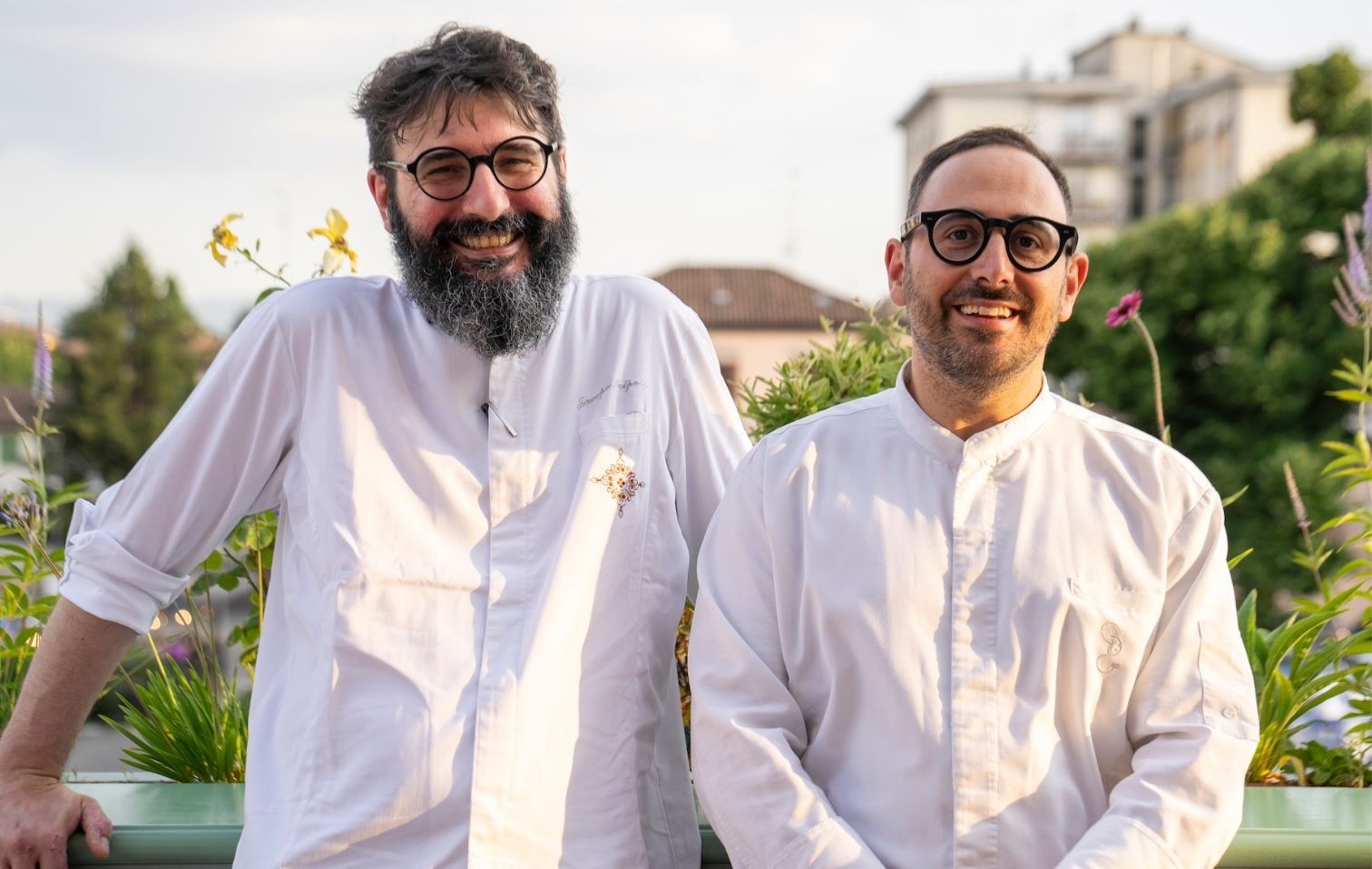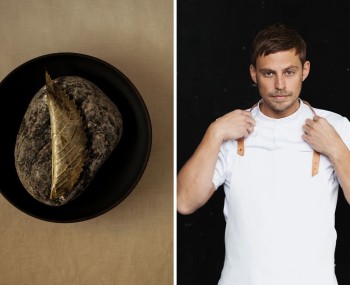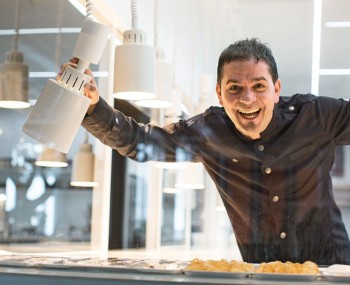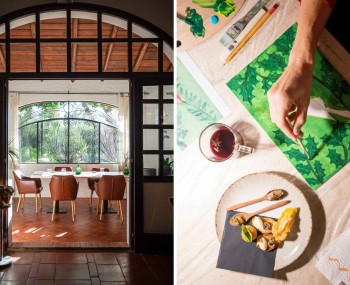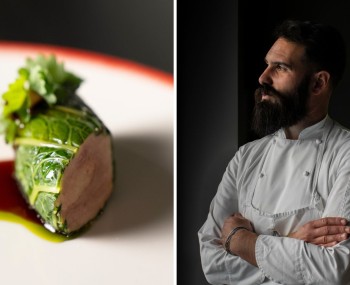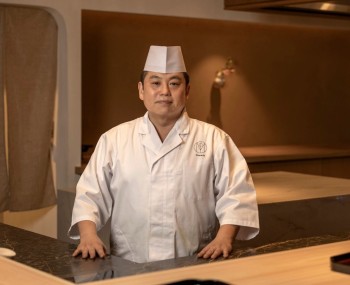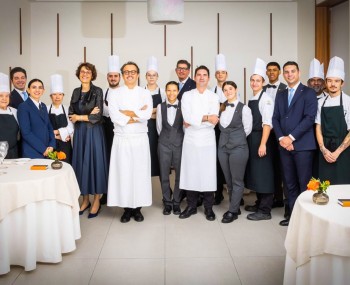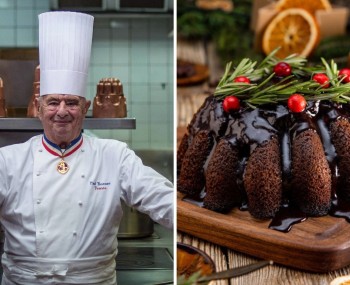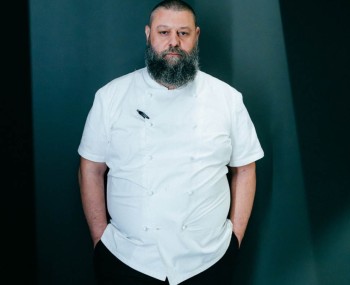The “Casa Bizzarri” dinner took place in Rubiera, with Jacopo Malpeli and Davide Di Fabio offering a successful tasting menu paired with a unique selection of Champagnes from the historic Maison de Venoge.
The Bizzarri family entered the Italian haute cuisine scene a few years ago with two restaurants: Osteria del Viandante in Rubiera and Dalla Gioconda in Gabicce Monte. They are paired with exceptional Champagnes. Within a short time, both restaurants were awarded one star by the Rossa (and a green star for the restaurant in the Marche region). The two restaurants are run by Jacopo Malpeli - a native of Emilia, one of the first to attend an ALMA course in 2004 - and Davide Di Fabio, who was Massimo Bottura's sous-chef at Osteria Francescana for many years. The occasion that brought them together was a special evening organized by Première Italia, a company specializing in the distribution of Champagne in Italy, which paired the menu with several vintages and formats from the Maison De Venoge. A separate chapter would be deserved by Première's CEO, Mario Federzoni, a living encyclopedia on sparkling wines from beyond the Alps and their history in Italy.
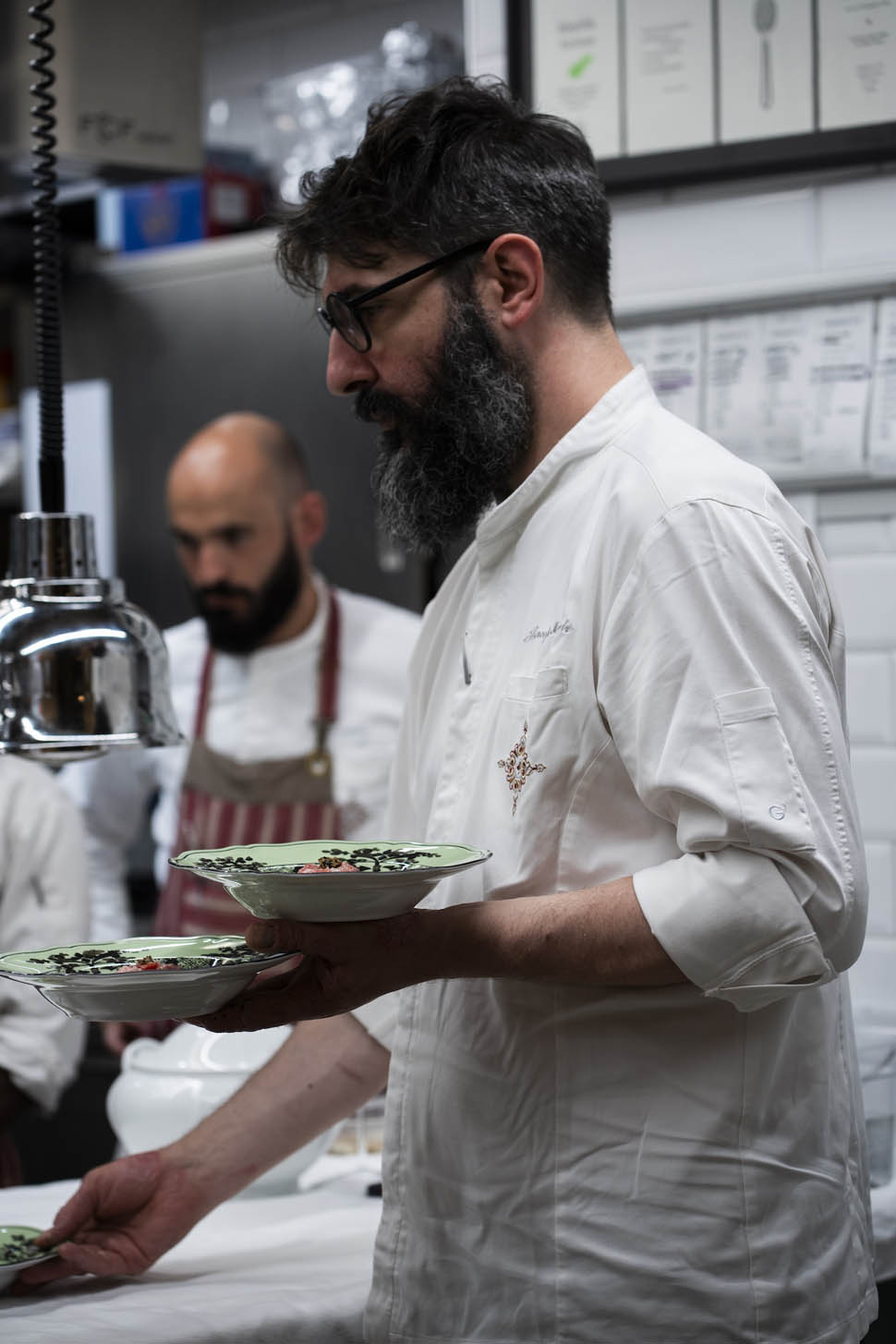
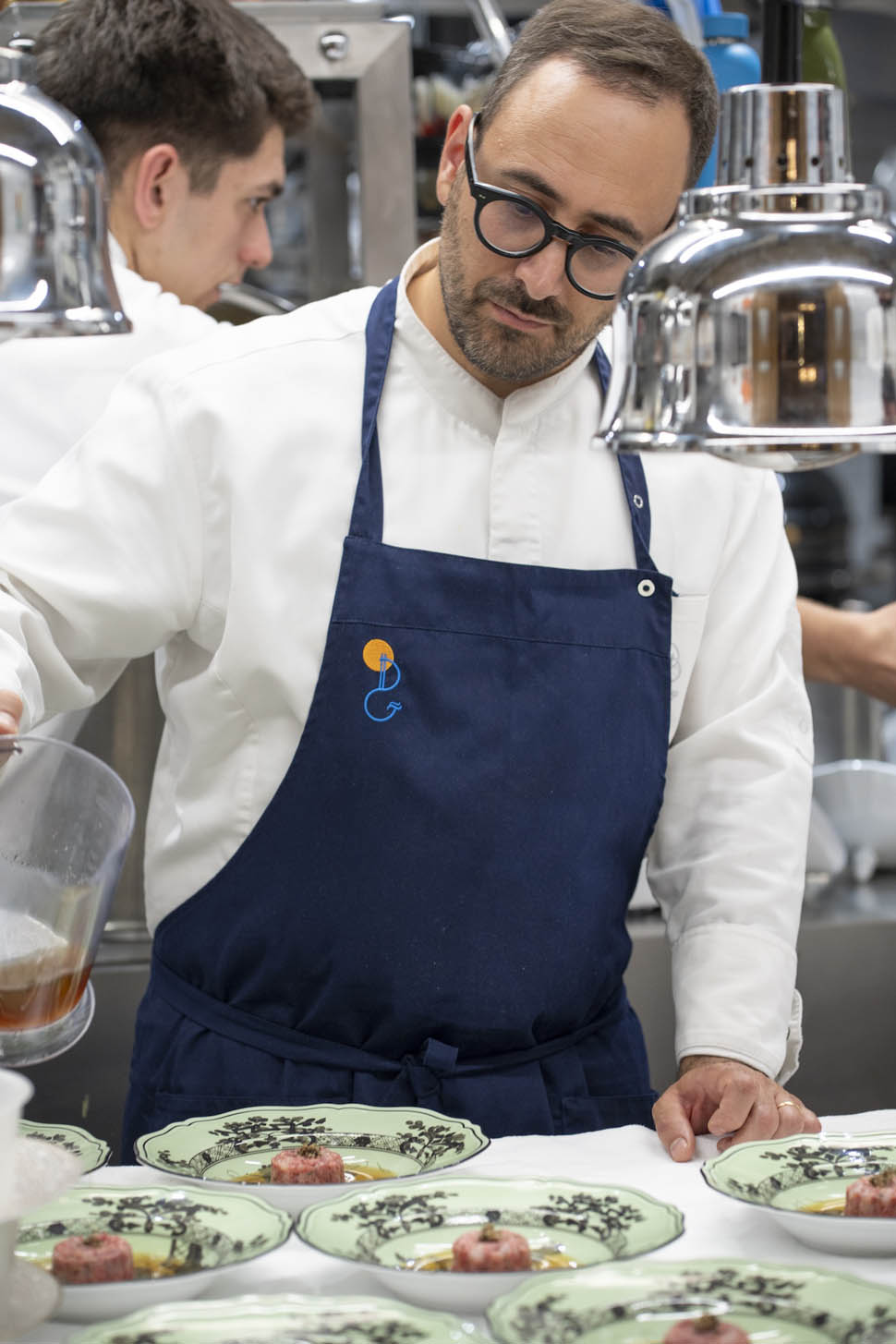
The Maison
De Venoge is a historic house, founded in 1837 in Mareuil sur Ay by Henri-Marc de Venoge, who was born in Geneva. The following year, he was the first ever to introduce an illustrated label to the world of wine and Champagne. The oval label included the type of wine, the year of harvest, the origin of the grapes, the name of the producer, and a colour drawing representing two bottles. One of the founder's four sons, Joseph de Venoge, who took over from his father, also introduced a new feature, giving fancy names to the various cuvées: Cuvée de la Comète, Grand Vin Impérial, Crémant Rosé, Vin du Paradis, and Grand vin des Anglais. Another memorable moment in the history of the Maison was 1938, when it reached the height of its fame thanks to Joseph de Venoge's invention: the Cuvée des Princes, dedicated to the Princes of Orange and placed in special decanter-shaped bottles. the height of its fame thanks to the invention of Joseph de Venoge: the Cuvée des Princes, dedicated to the Princes of Orange and placed in special decanter-shaped bottles, in memory of the then fashionable practice of decanting champagne into crystal decanters to prevent the lees from clouding the wine. These special bottles have remained in use ever since and still characterize the Maison today.
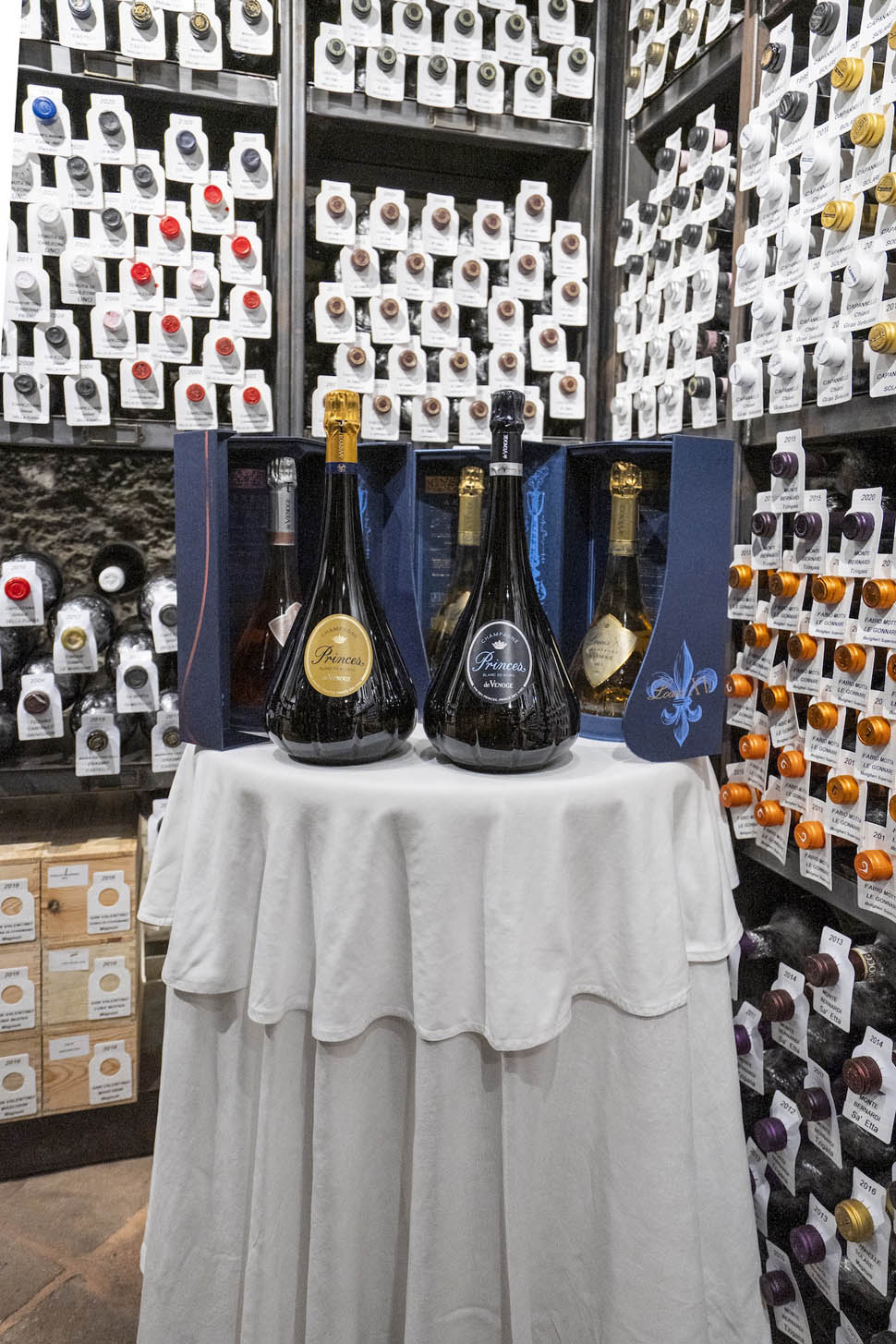
Another important date to note is 1995, the year that saw the birth of the Cuvée de Prestige Louis XV, a splendid vintage Champagne that would only be released in 2005, a cuvée created in honor of the king who did so much for Champagne. in fact, on May 25, 1728, King Louis XV issued a decree allowing only Champagne wines to be shipped and sold in bottles, marking the birth of Champagne as we know it today. And it was precisely the Champagnes of this Cuvée that surprised the guests at the special dinner held in Rubiera.
The pairing
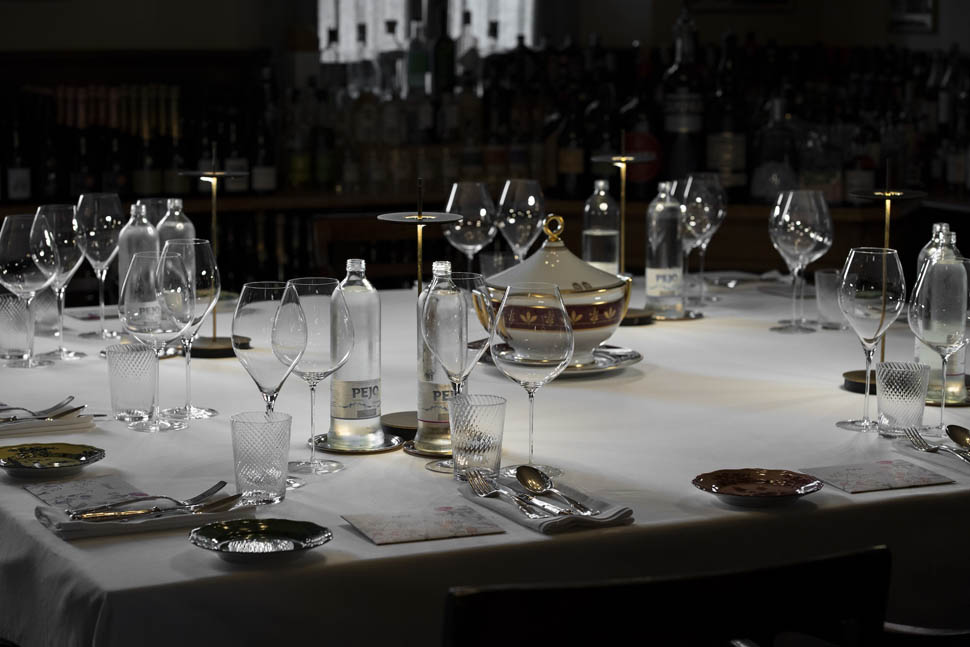
Five Champagnes were served to delight guests during the tasting: Princes Blanc de Blanc and Princes Blanc de Noirs in magnum bottles, followed by Louis XV 2014 and 1996, and finally Louis XV Rosé 2006. These wines demonstrated the cutting edge of the Champenoise tradition and the careful selection of the best crus in the Champagne region. It should be noted that all the wines are made from the first pressing of the grapes.
The dinner and the dishes
The special four-handed dinner took place within the walls of L'Osteria del Viandante, located inside a 15th-century fort. As we told you at the time of its opening, the restaurant was strongly desired by Marco Bizzarri, former CEO of Gucci, who grew up and lives in the Emilian town. For the occasion, his son Stefano, who usually works at Dalla Gioconda, was in charge of the dining room.
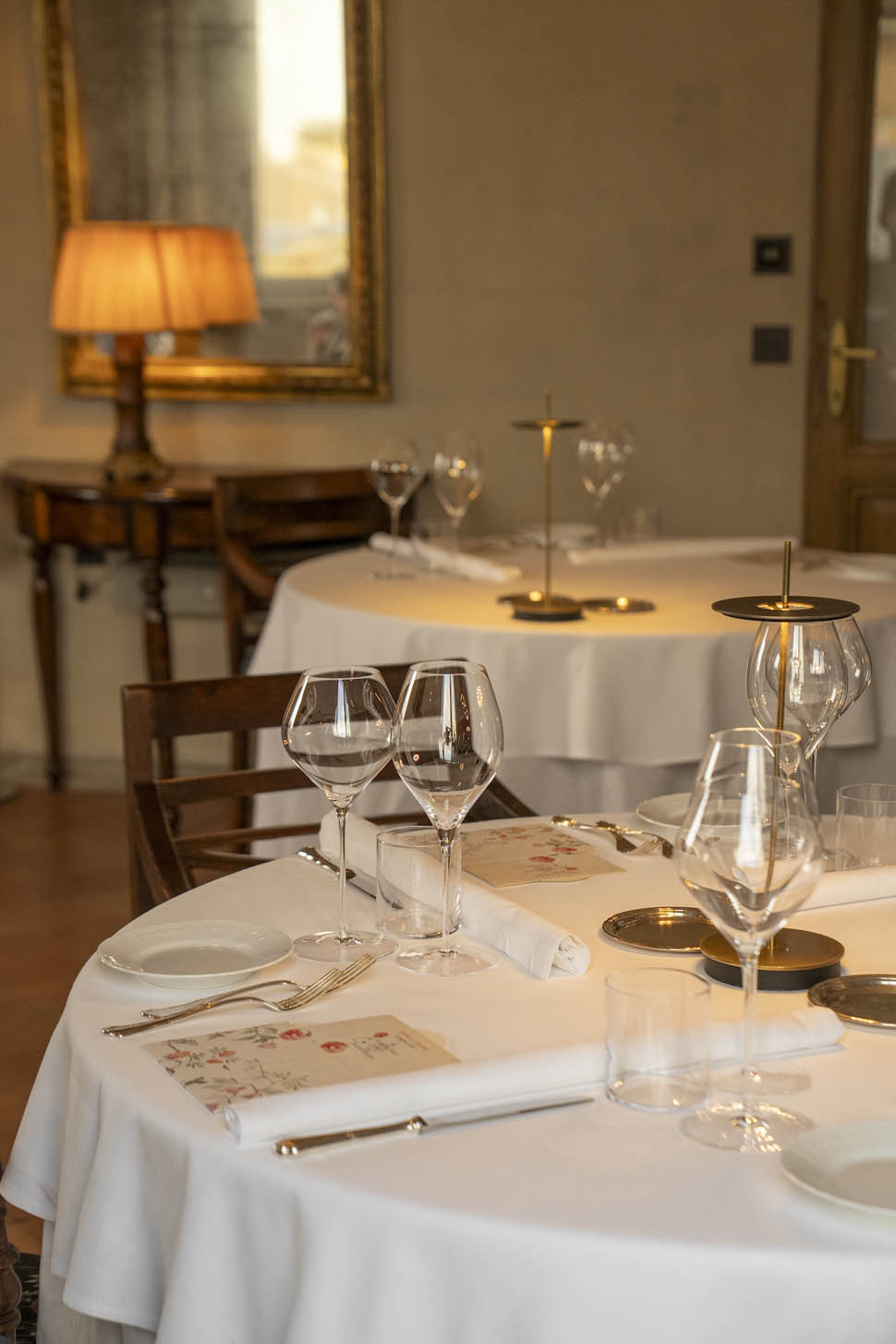
The menu was designed with two dishes for each course, one for Di Fabio and one for Malpeli—and while it might have seemed complicated to find a balance, it was surprising to see how the dishes somehow complemented each other, or at least didn't clash, as can often happen, inevitably, in a four-handed meal. And so, after the welcome from the kitchen, the dinner began with Di Fabio's Battuta di Marchigiana e gamberi rosa (Marchigiana beef tartare with pink shrimp), with a black truffle and citrus broth adding depth of flavor and umami. Malpeli, on the other hand, offered the rich and luxurious taste of Midollo di Fassona piemontese cotto alla brace (grilled Piedmontese Fassona beef marrow) with tartare of codone (a type of fish), tuna sauce, and caviar.

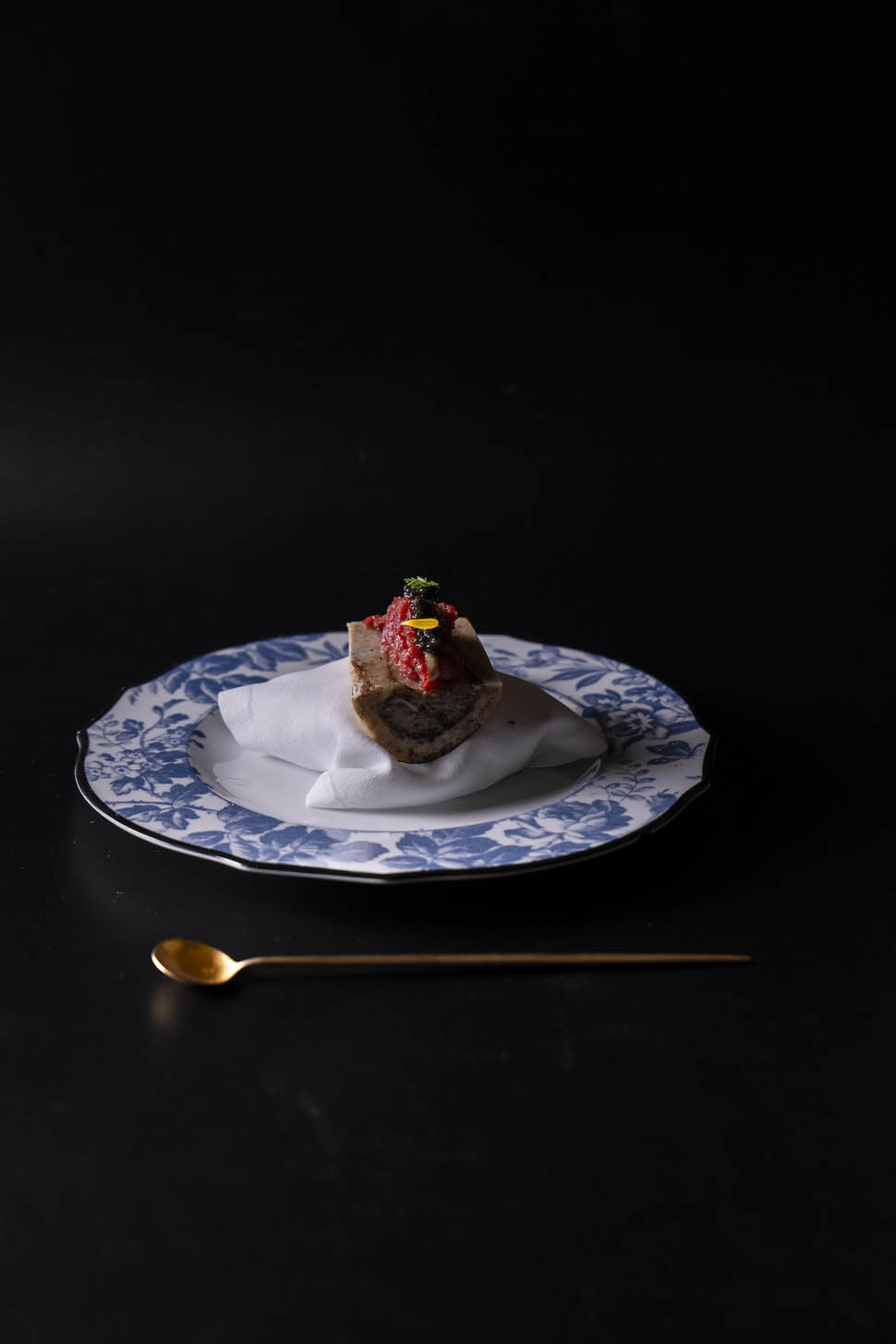
The second course takes us into the world of carbohydrates with the now iconic Zuppiera di pasta e pesci dell'Adriatico (Adriatic pasta and fish soup) by chef Di Fabio, followed by his colleague and host with Bottoni di ortica e tarassaco (nettle and dandelion bottoni pasta) accompanied by a white butter cream, chamomile and chopped capers.
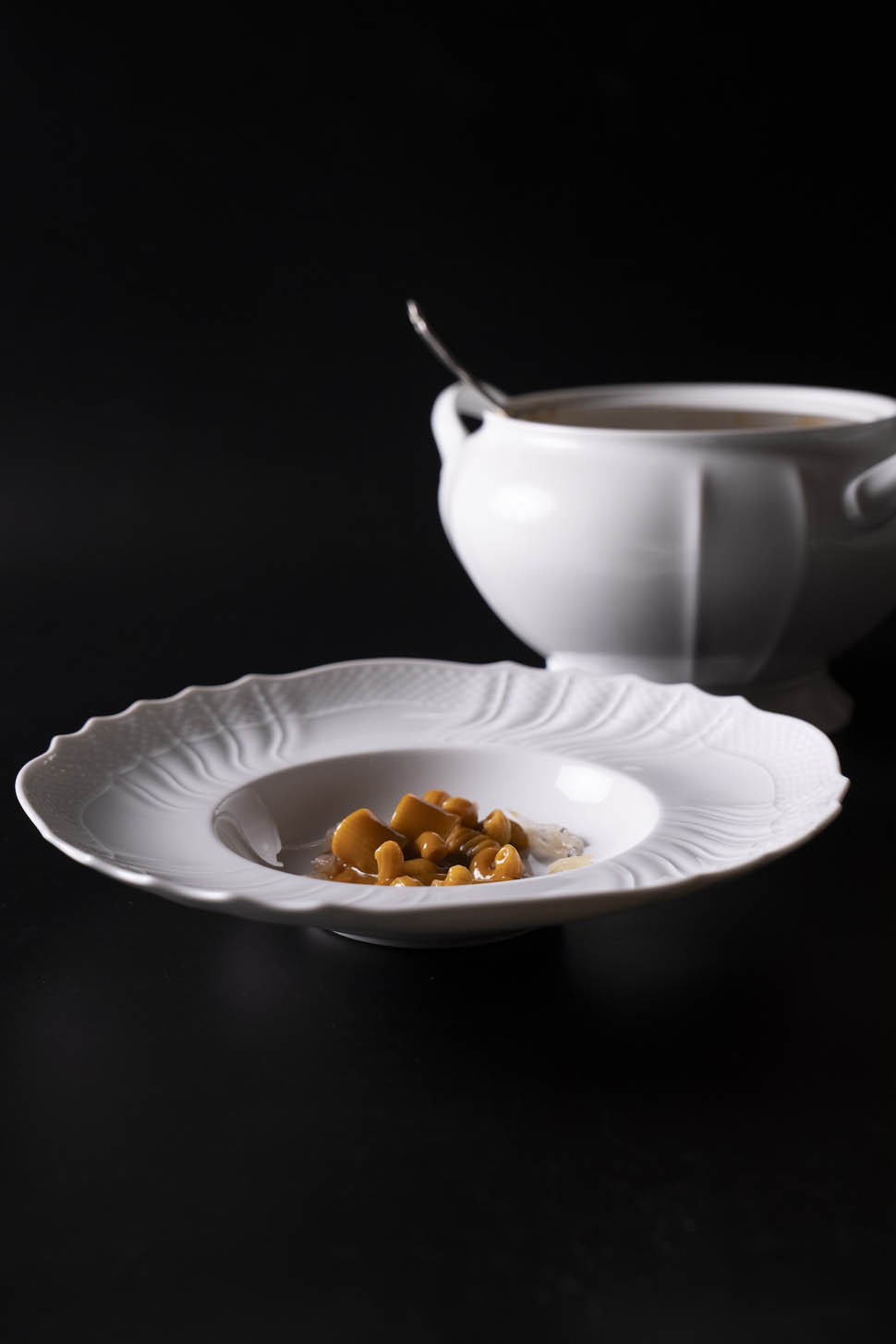
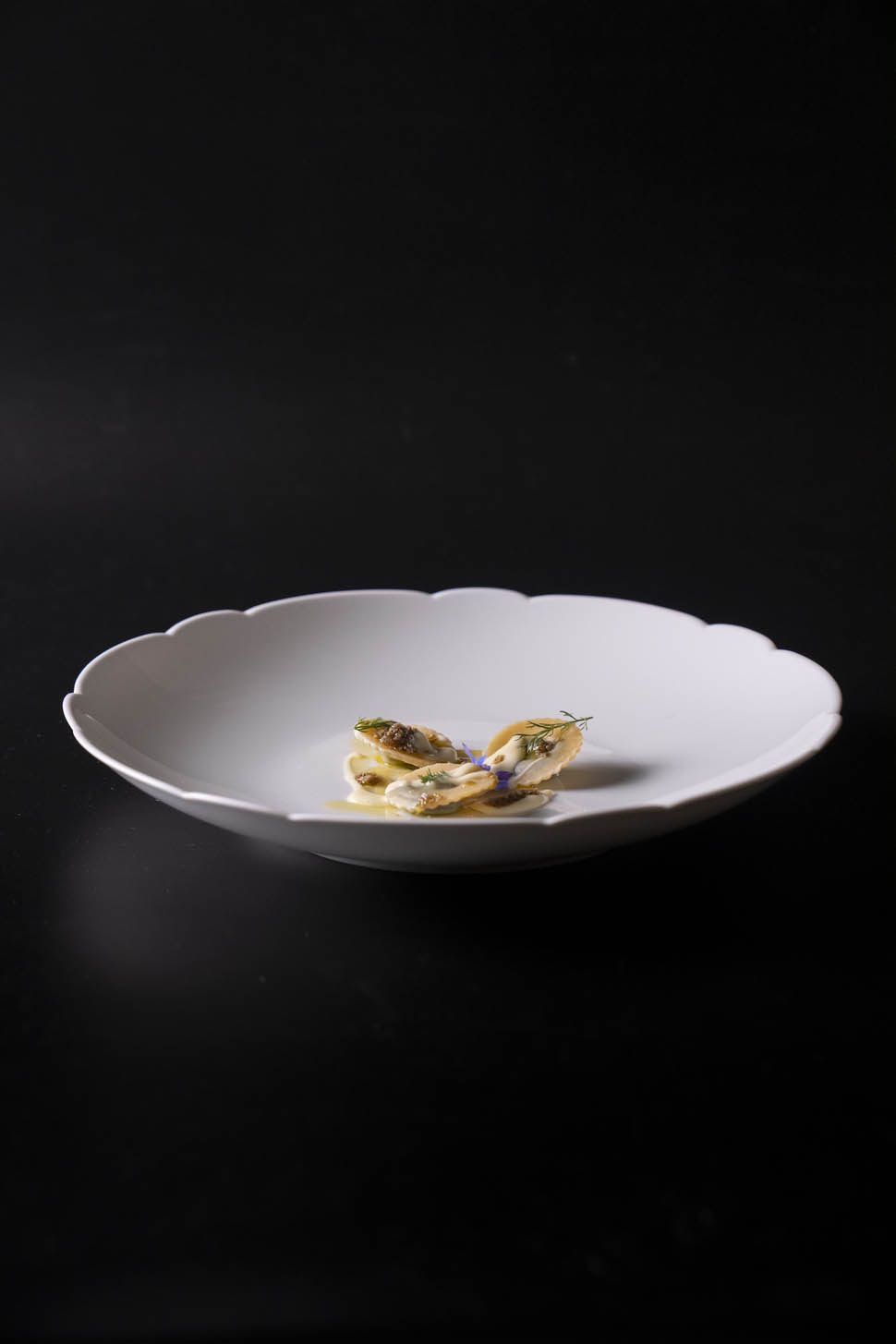
The main course showcases one of the most classic dualisms: fish or meat? The guest chef offers sea bream in a sauce of sour apricots and wood sorrel, while Malpeli brings us back to dry land with herb-roasted pigeon with grilled spring onions, medlars, and mustard.
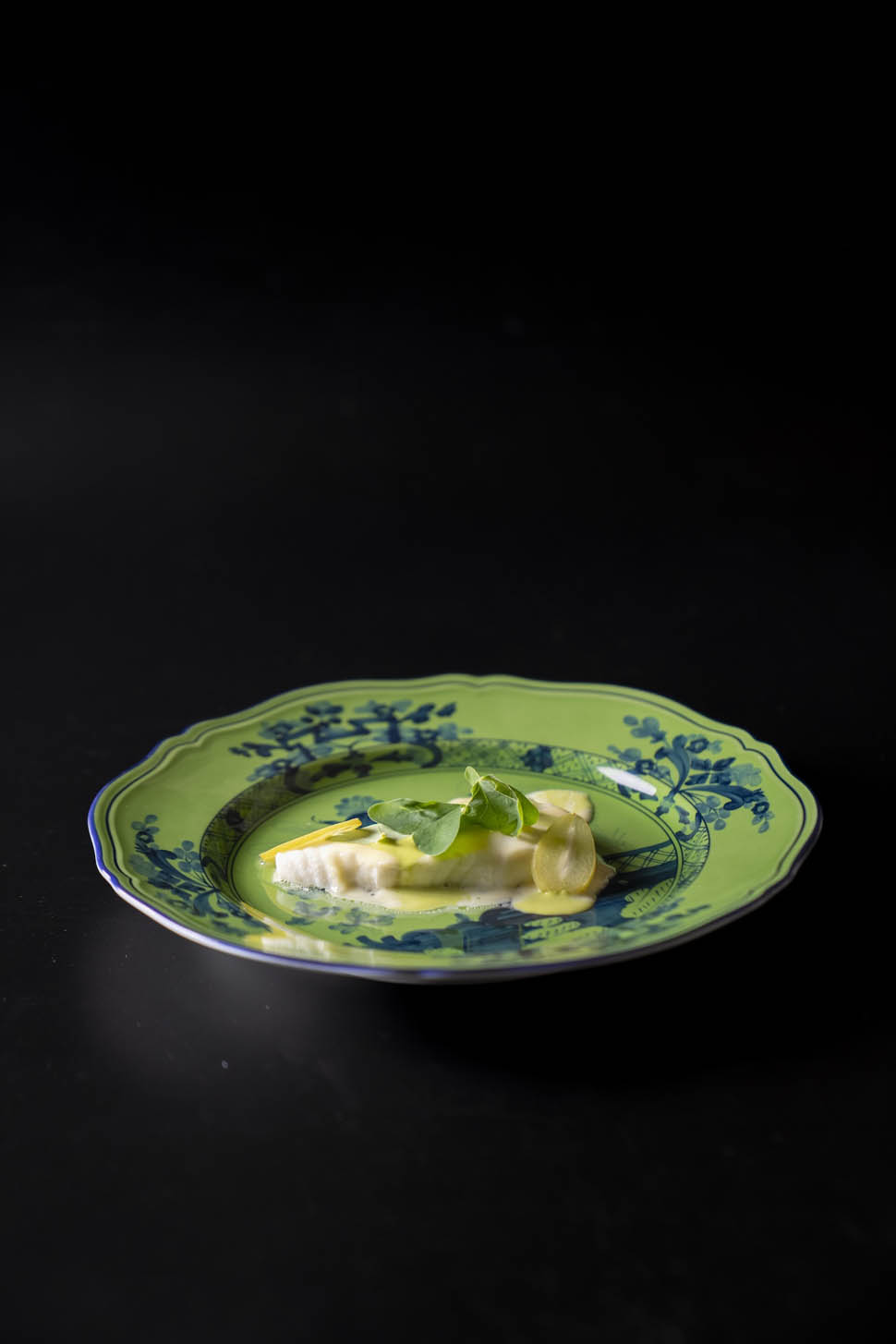
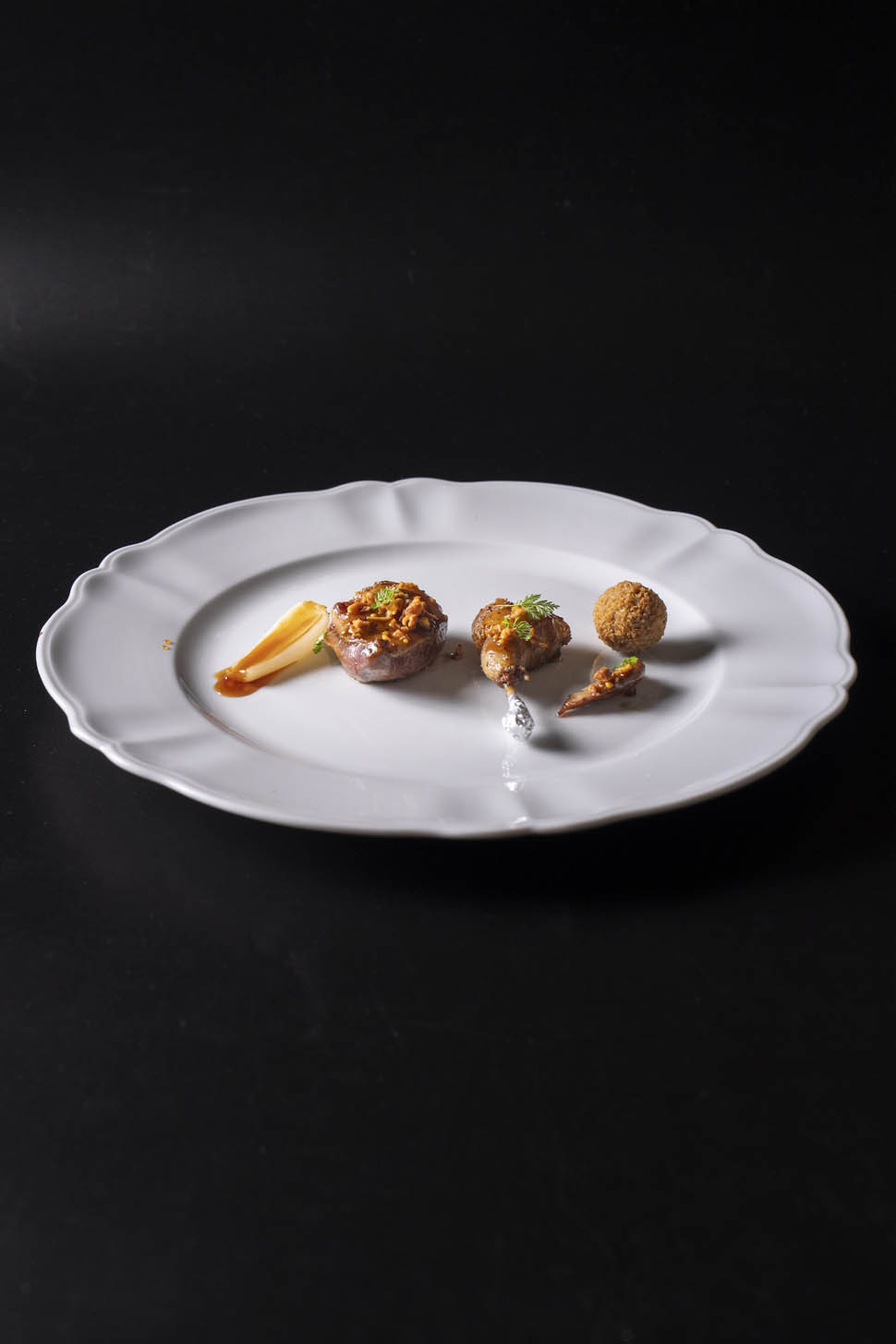
The use of fruit in both dishes is very interesting, adding acidity and balance. The dinner ends with two complementary desserts: indulgence for Di Fabio and cleanliness for Malpeli. The former offers Neola, a typical Abruzzo wafer, in a Suzette version with custard, bitter orange, and a Grand Marnier duck sauce. Malpeli's dessert is ideal for ending the meal with a semifreddo of herbs and Chartreuse, pistachio namelaka, and wasabi meringue.
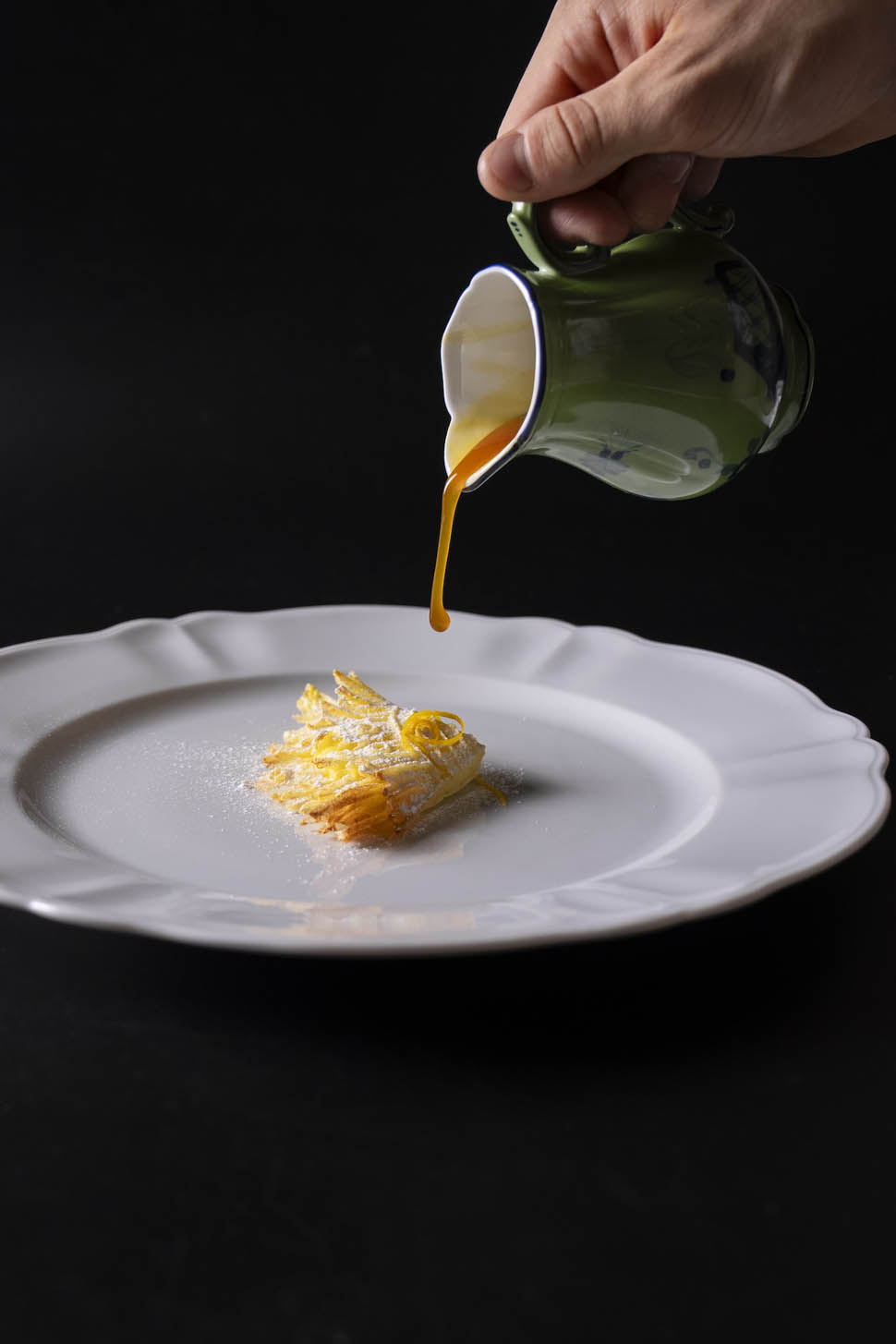
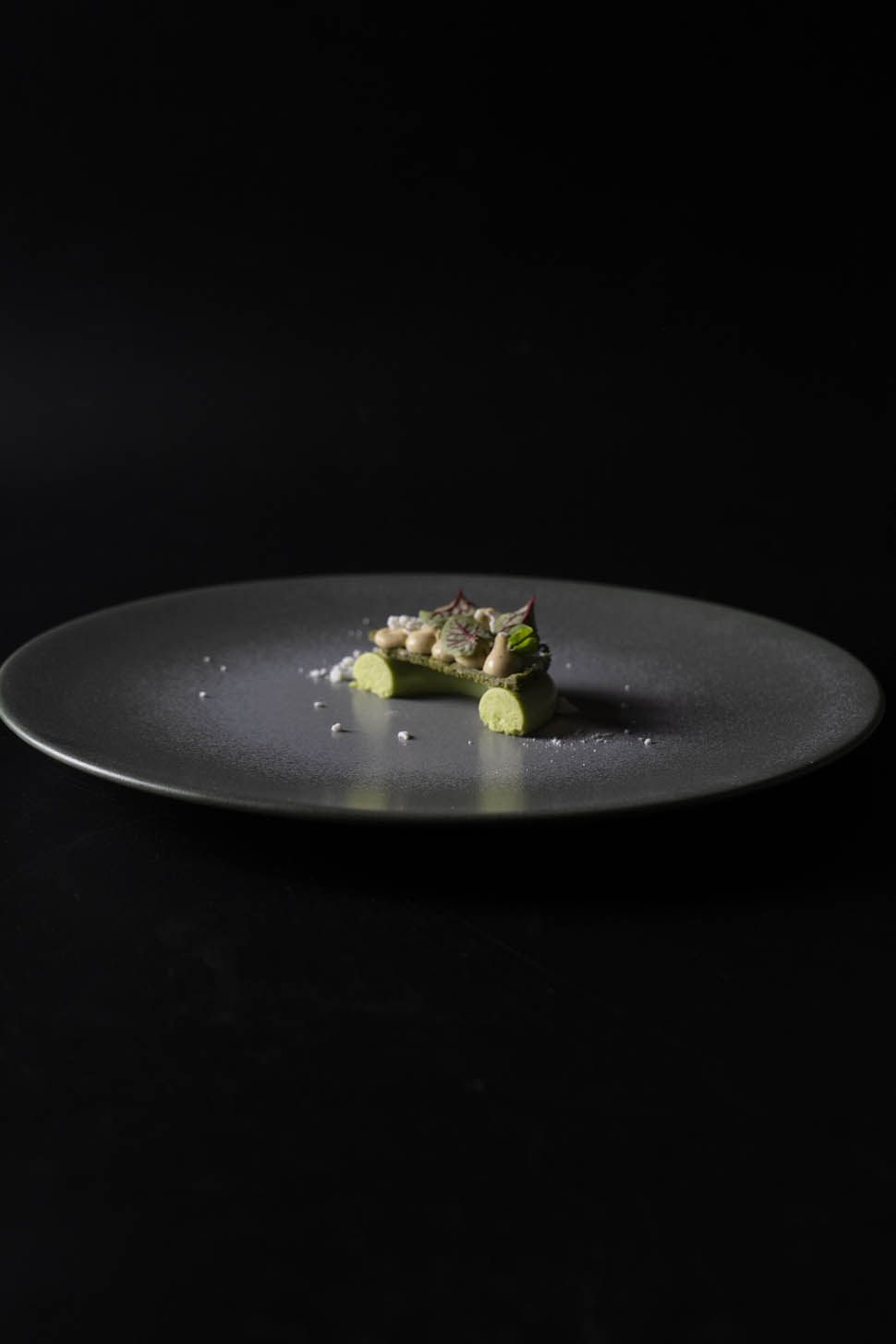
A menu that on paper might have seemed like a tennis match, one against one, but instead turned out to be a doubles match, with the two chefs on the same side of the net.
